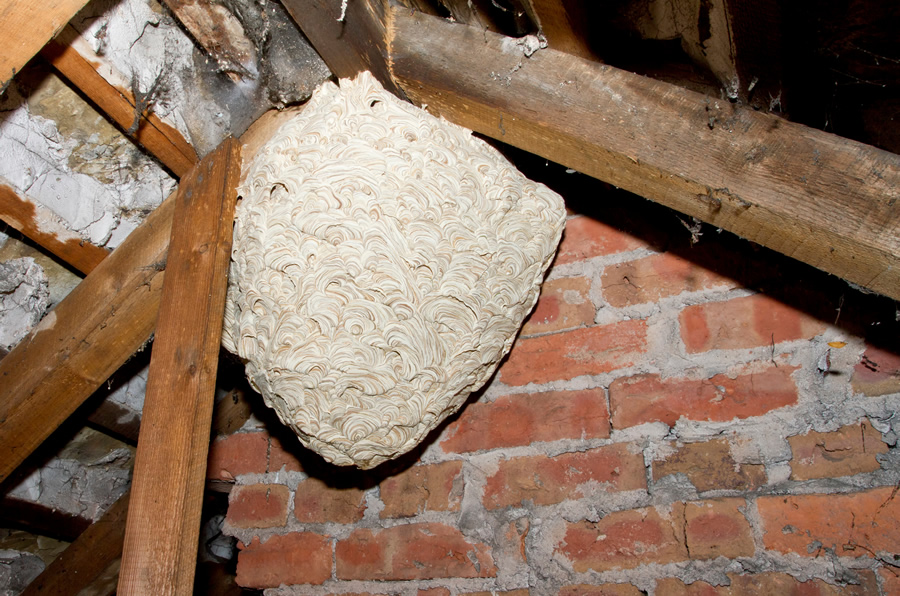DIY vs. Professional Wasp Nest Removal: What You Need to Know
Wasp nest removal is a task that requires careful planning and execution. Whether you’re dealing with a small nest in your backyard or a larger one near your home, it’s crucial to approach the situation with caution and the right knowledge. In this comprehensive guide, we will walk you through the process of removing a wasp nest safely and effectively.

Understanding the Wasp Nest
Before you begin the removal process, it’s essential to understand the nature of the wasp nest and the type of wasps you’re dealing with. Wasps are social insects that build nests in various locations, such as trees, shrubs, eaves, and even underground. The type of wasp and the location of the nest can influence your removal strategy.
Identifying Wasp Species
Different wasp species have distinct characteristics and behaviors. Here are some common types:
Yellowjackets: Recognized by their yellow and black coloration, yellowjackets often build nests in the ground or in wall cavities.
Paper Wasps: Paper wasps are slender with long legs and are known for their umbrella-shaped nests, which are typically found under eaves or on tree branches.
Hornets: Larger than other wasps, hornets are usually brown with white markings. They construct large, hanging nests in trees or on structures.
Safety First
Safety should be your top priority when dealing with wasp nest removal. Wasps can become highly aggressive when their nest is threatened, so taking the necessary precautions is crucial.
Protective Gear
Wear protective clothing, including:
A beekeeping suit or thick, long-sleeved clothing to Wasp nest removal cover your entire body.
Gloves to protect your hands.
A face mask or beekeeper’s veil to shield your face.
Safety goggles to protect your eyes.
Choose the Right Time
Opt for evening removal when wasps are less active. Adequate lighting is essential for a successful removal.
Keep Others Away
Clear the area of any potential onlookers, especially children and pets who might inadvertently disturb the process.
DIY Wasp Nest Removal
If you decide to tackle the task yourself, follow these steps carefully:
Step 1: Assess the Nest
Start by identifying the nest’s location and size. Smaller nests may be removed with minimal risk, while larger nests may require professional intervention.
Step 2: Gather Your Tools
Collect the necessary equipment, including a wasp spray or dust insecticide, a long-reaching pole, and a plastic bag for nest disposal.
Step 3: Approach Cautiously
Approach the nest slowly and quietly to avoid agitating the wasps. Maintain a safe distance.
Step 4: Apply Insecticide
Follow the instructions on the insecticide product carefully, and apply it directly into the nest entrance. This will eliminate the wasps inside the nest.
Step 5: Wait and Remove
After applying the insecticide, wait for a sufficient amount of time to ensure all the wasps are dead. Then, carefully remove the nest and seal it in a plastic bag.
Step 6: Clean-Up
Thoroughly clean the area to remove any remaining traces of pheromones, which can attract other wasps.
Professional Wasp Nest Removal
For larger nests or if you’re uncomfortable handling the task yourself, it’s best to call a professional pest control service. They have the experience, equipment, and knowledge to safely and effectively remove the nest.
Preventing Future Infestations
After successfully removing a wasp nest, it’s crucial to take preventive measures to avoid future infestations. Here are some tips:
Regularly inspect your property for new nests.
Seal any cracks or openings in walls and roofs.
Keep garbage cans tightly sealed.
Use wasp traps around your property.
In conclusion, wasp nest removal is a task that requires caution, preparation, and the right protective gear. Whether you choose to handle it yourself or seek professional help, the key is to eliminate the threat safely and effectively, ensuring the safety of yourself and those around you.
